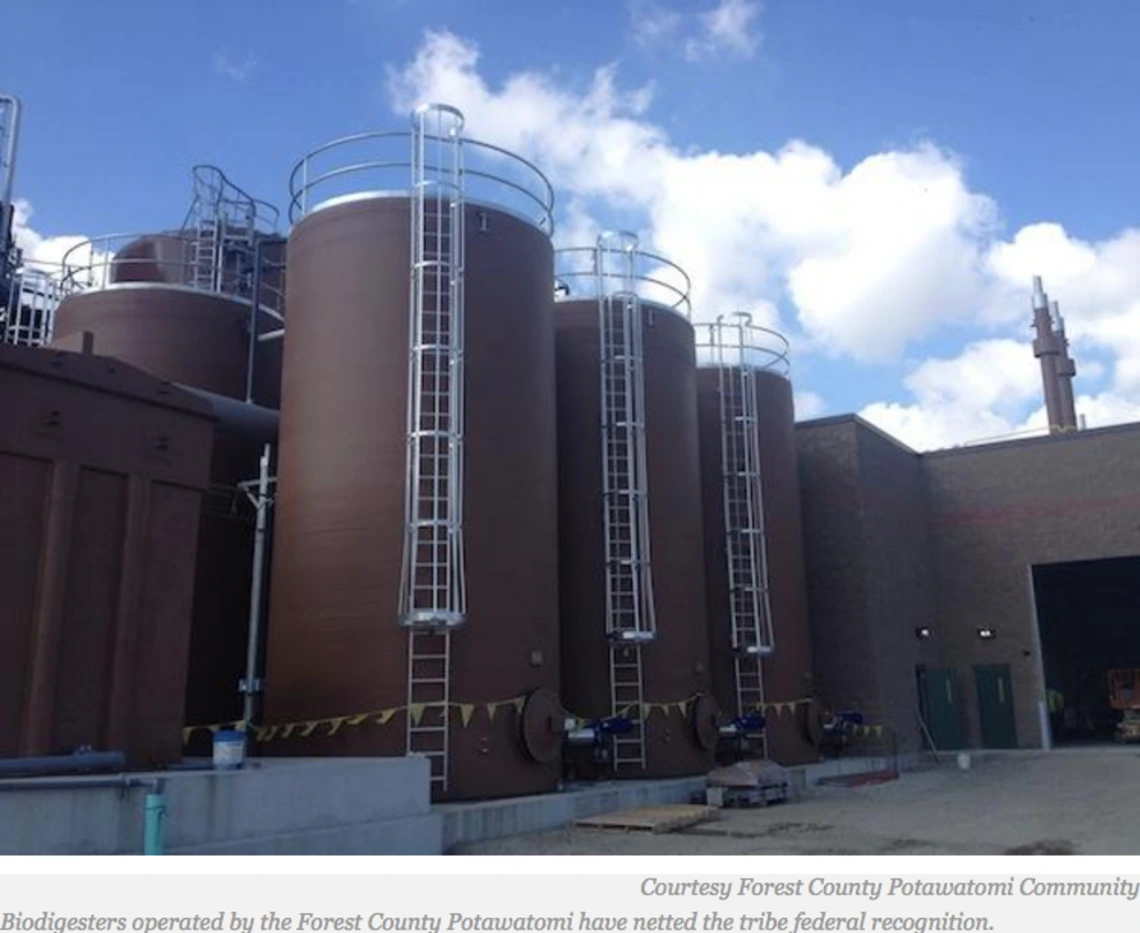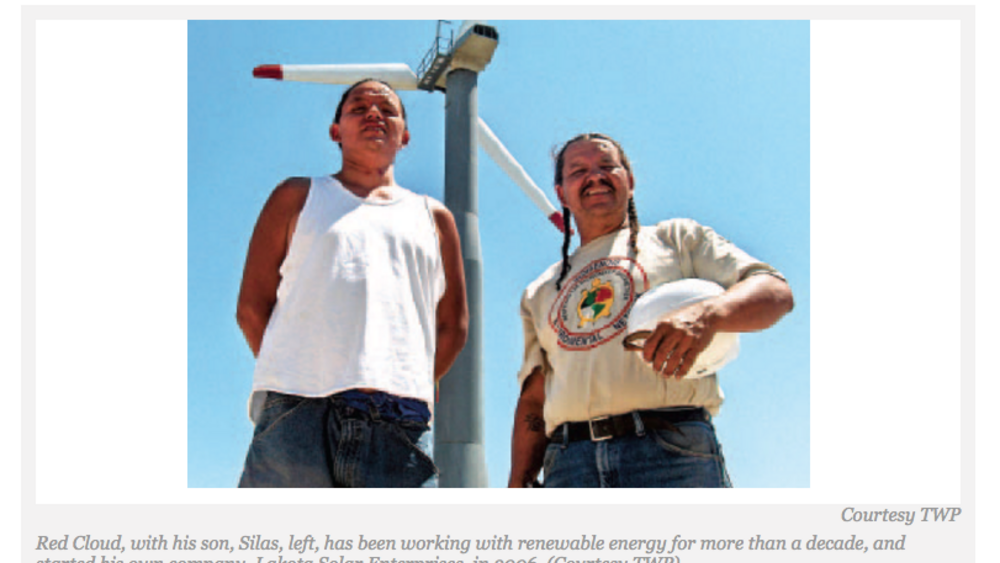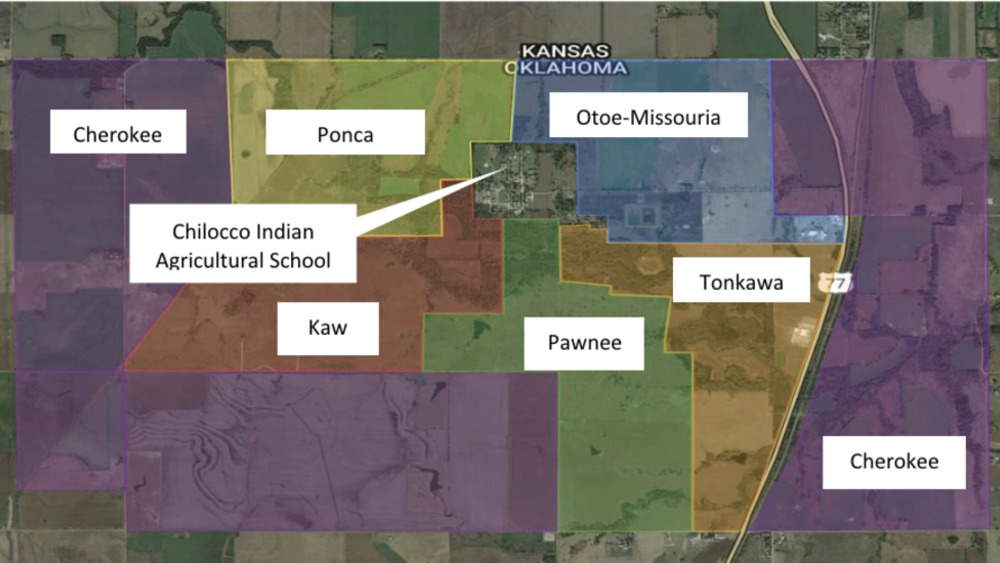They squelched a mine, established air-quality monitoring and built a solar plant. Where does a tribe go from there?
For the Forest County Potawatomi Community it meant going deeper. The tribe has translated traditional values into a program that uses cutting-edge technologies and sophisticated environmental principles to preserve clean land, water and air for future generations. The Forest Potawatomi derives more than 55 million kilowatt-hours of power annually from renewables, supplying 105 percent of its energy needs...
Additional Information
Lee, Tanya H. "Forest County Potawatomi Renewables Program Nets EPA Top 30 Nod." Indian Country Today. May 21, 2014. Article. (https://ictnews.org/archive/forest-county-potawatomi-renewables-program-nets-epa-top-30-nod, accessed May 5, 2023)




